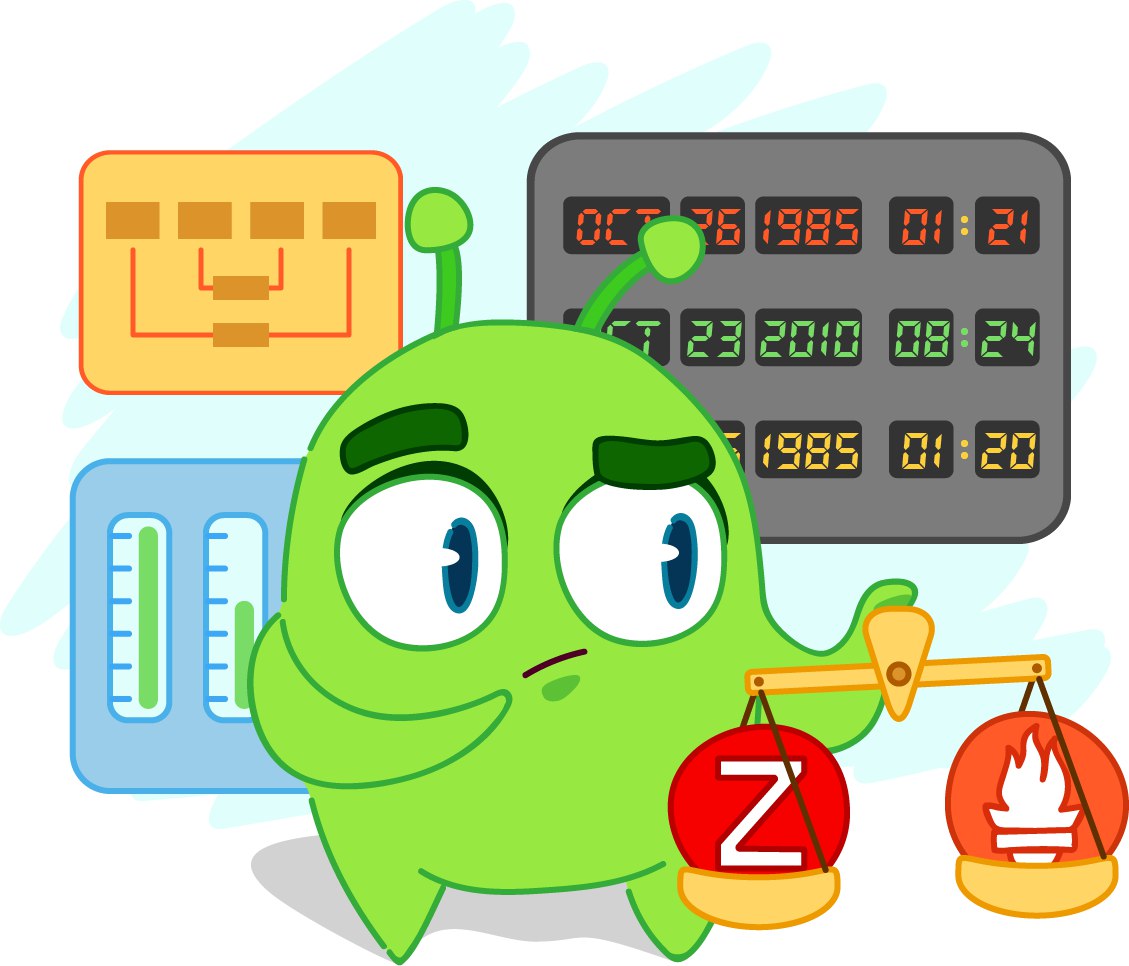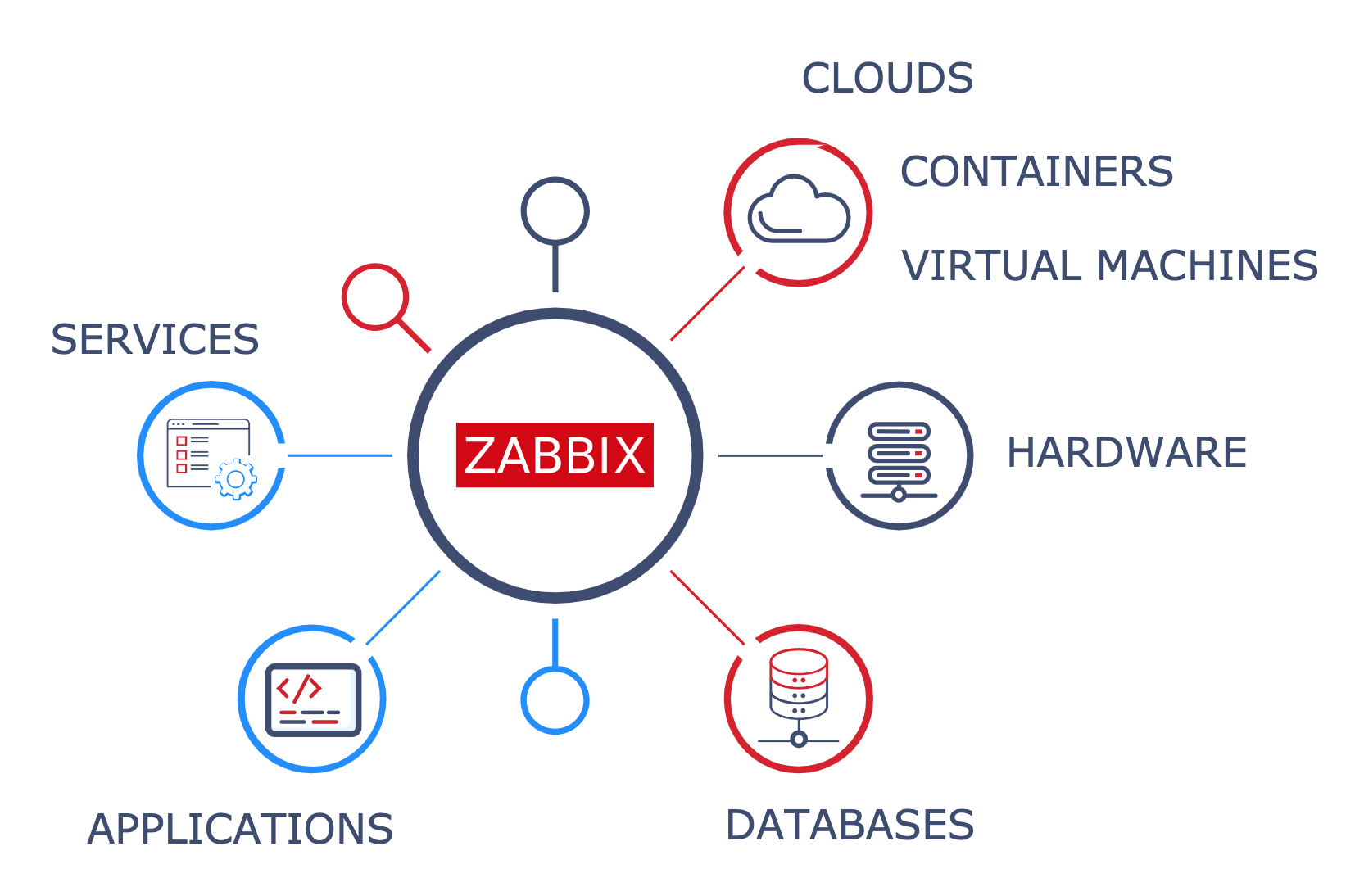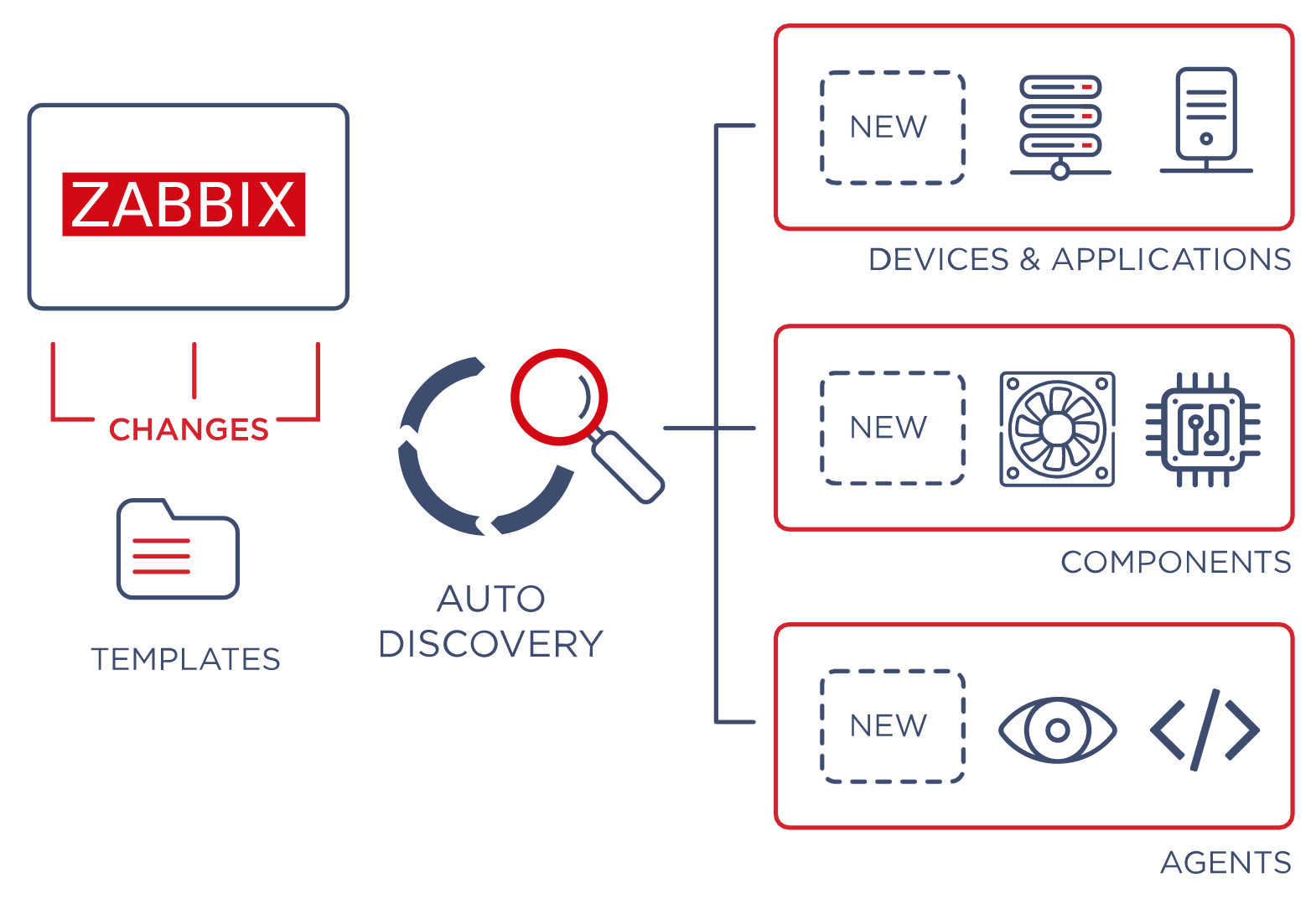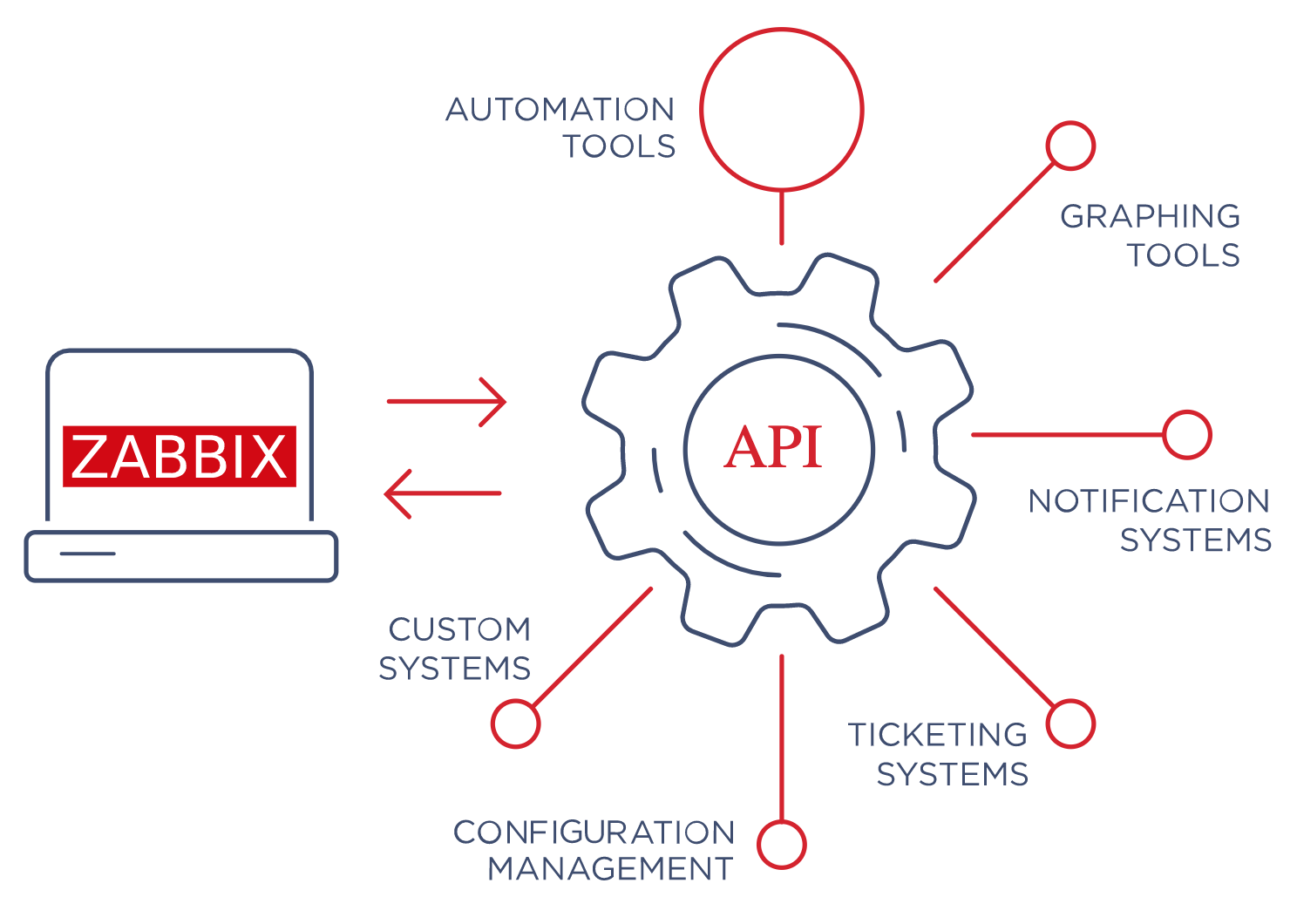In IT there is such a superstition: "It works, do not touch." This can be said about our monitoring system. In Southbridge we use Zabbix - when we chose it, it was very cool. And, in fact, he had no alternatives.
Over time, our ecosystem has overgrown with instructions, additional bindings, and integration with redmine has appeared. Zabbix has a powerful competitor that excelled in many aspects: speed, HA almost out of the box, beautiful visualization, optimization of work in kubernethes environments.
But we are not in a hurry to cross. We decided to take a look at the twinkle in Zabbix and ask what chips they plan to do in the next releases. We did not stand on ceremony and asked uncomfortable questions to Sergey Sorokin, Zabbix Development Director, and Vitaly Zhuravlev, Solution architect. What came of this, read on.

1. Tell us about the history of the company. How was the product idea born?
The history of the company began in 1997, when the founder and owner of the company, Alexey Vladyshev, worked as a database administrator in one of the banks. It seemed to Alexey that it was ineffective to manage the bases without the availability of data on the historical values of various parameters, without understanding the current and historical state of the environment.
At the same time, the monitoring solution present at that moment on the market is very expensive, slow, and requires large resources. Therefore, Alex begins to write various scripts that allow him to effectively monitor the part of the infrastructure entrusted to him. It turns into a hobby. Alexey is changing work, but interest in the project remains. In 2000-2001, the project was being rewritten from scratch - and Alexei was thinking about giving other administrators the opportunity to use the best practices. At the same time, the question arose of under which license to issue the existing code. Alex decided to release it under the GPLv2 license. The tool was immediately noticed in a professional environment. Over time, requests for support, training, and the expansion of software capabilities began to come to Alexey. The number of such orders is constantly growing. So, naturally, the decision to create a company came. The company was founded on April 12, 2005.

2. What key points can you single out in the history of Zabbix?
There are several such points at the moment:
but. The beginning of Alexey’s work on scripts - 1997.
b. GPLv2 Code Publication - 2001
in. Establishment of Zabbix - 2005
The conclusion of the first partnership agreements, the creation of an affiliate program - 2007.
e. Foundation of Zabbix Japan LLC - 2012.
e. Foundation of Zabbix LLC (USA) - 2015
g. Foundation of Zabbix LLC - 2018
3. How many people do you have?
Currently, the Zabbix group of companies employs a little more than 70 employees: developers, testers, project managers, support engineers, consultants, sellers, and marketing employees.
4. How do you write roadmap, do you collect feedback from users? How do you determine where to go next?
When creating Roadmap for the next version of Zabbix, we focus on the following important factors, more precisely, we collect Roadmap in the following categories:
but. Strategic improvements to Zabbix. Something that Zabbix itself considers very important. For example, Zabbix agent written in Go.
b. Things that Zabbix customers and partners want to see on Zabbix. And for which they are willing to pay.
in. Wishes / suggestions from the Zabbix community.
d. Technical debts. :) Things that we released in previous versions, but did not provide full functionality, did not make it flexible enough, did not offer all the options.

5. Can you compare Zabbix and prometheus? What is better and worse in Zabbix?
The main difference, in our opinion, Prometheus is primarily a system for collecting metrics - and in order to collect full monitoring at the enterprise, you need to add many other components to the prometeus, such as graphan for visualization, a separate long-term storage, separately manage somewhere problems, work separately with the logs ...
There will be no typical monitoring templates in Prometheus, having received all, all thousands of metrics from exporters, you will need to find problematic signals in them yourself. Configuring Prometheus - configuration files. Somewhere it is more convenient, somewhere not.
Zabbix is a universal platform for creating on-and-off monitoring, we have our own visualization, correlation of problems and their display, distribution of access rights to the system, audit of actions, many options for collecting data through an agent, proxy, using completely different protocols, the ability to quickly expand the system with plugins, scripts, modules ...
And you can simply collect data, as it is, for example, using the HTTP protocol, and then turn the responses into useful metrics using preprocessing functions such as JavaScript, JSONPath, XMLPath, CSV and the like. Many users appreciate Zabbix for the ability to configure and manage the system through a web interface, for the ability to describe typical monitoring configurations in the form of templates that can be shared with each other, and containing not only metrics, but also detection rules, thresholds, graphs, descriptions - A complete set of objects for monitoring standard objects.
Many also like the ability to automate management and configuration through the Zabbix API. In general, I do not want to arrange a holivar. It seems to us that both systems are well suited to their tasks and can harmoniously complement each other, for example, Zabbix from version 4.2 can take data from or from Prometheus exporters.
6. Have you considered making zabbix saas?
We thought and will do it in the future, but we want to make such a solution as convenient as possible for customers. In this case, the standard Zabbix should be offered along with communication tools, advanced data collection tools, and so on.
7. When to wait for zabbix ha? And whether to wait?
Zabbix HA definitely wait. We really hope to see something in Zabbix 5.0 LTS, but the situation will become clearer in November 2019, when Roadmap Zabbix 5.0 is fully confirmed.
8. Why does the media type have such a meager choice out of the box? Not planning on adding Slack, telegram, and so on? Does anyone else use jabber?
Jabber in version Zabbix 4.4 was removed, but Webhooks was added. Regarding media types, I would not want to make specific applications from the system, but standard messaging tools. It's no secret that many of these chats or desktop services have APIs via HTTP - therefore, this year the situation will change with the release of 4.4.
With the advent of webhooks in Zabbix, you can expect all the most popular integration out of the box in the near future. In this integration will be two-way, and not just simple one-way notifications. And those media types that we won’t get to will be made by our community - because now the whole media type can be exported to the configuration file, posted on share.zabbix.com or github. And other users will only need to import the file in order to start using such integration. At the same time, you don’t have to install any additional scripts!
9. Why is the direction of Virtual machine discovery not developing? There is only vmware. Many are waiting for integration with ec2, openstack.
No, the direction is developing. For example, in 4.4, the datastore discovery appeared via the vm.datastore.discovery key. Very cool wmi.getall keys also appeared in 4.4 - we expect that through it, together with the perf_counter_en key, you can do good Hyper-V monitoring. Well, there will be other important changes in this direction in Zabbix 5.0.

10. You didn’t think about giving up templates and doing like prometeus, when everything that is given away is taken away?
Prometheus automatically takes all the metrics, it’s convenient. A template is more than just a set of metrics, it is a “container” that contains all the necessary type monitoring configuration for a given type of resource or service. It already has a set of important triggers, graphs, detection rules, it contains descriptions of metrics and threshold values that help the user understand what is going on, and which thresholds are checked and why. At the same time, templates are easy to share with other users - and they will get good monitoring of their system, not even being an expert in it.
11. Why are there so few metrics out of the box? This greatly complicates the setup in terms of operation.
If out of the box you mean ready-made templates, then right now we are working on expanding and improving our templates. Zabbix 4.4 has come out with a new, improved set and better features.
For Zabbix, you can always find share.zabbix.com a ready-made template for almost any system. But we decided that we should do the basic templates ourselves, showing an example to the others, and also freeing users from writing once again a template for some MySQL. Therefore, now in Zabbix there will only be more official templates with each version.

12. When it will be possible to build triggers that are not tied to hosts, but for example on the basis of labels. For example, we monitor a site from n different points, and we want a simple trigger that fires when the site is not accessible from 2 or more points.
In fact, such functionality has been in Zabbix for several years, written for one of the clients. Customer is ICANN. Also, such checks can be done, for example, through aggregated items or using the Zabbix API. Now we are actively working to simplify the creation of such checks.
PS : At one of the Slurms, Zabbix developers asked us what we want to see in the product in order to monitor Kubernetes clusters using Zabbix, and not Prometheus.
It's great when developers go to meet customers, rather than remain a thing to themselves. And now we are meeting every release with sincere interest - the good news is that more and more features that we talked about acquire flesh and blood.
While developers do not withdraw into themselves, but are interested in the needs of customers, the product lives and develops. We will follow the new releases of Zabbix.
PPS : In a few months, we will launch an online monitoring course. To whom it is interesting, subscribe not to miss the announcement. In the meantime, you can go through our Kubernetes Slurm .